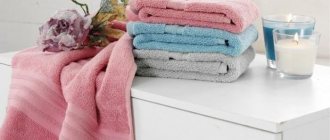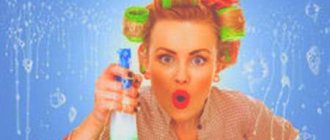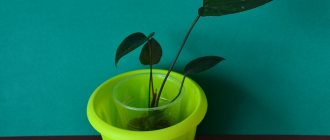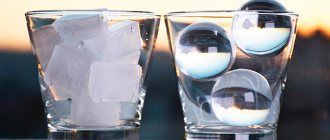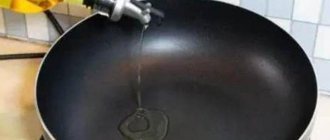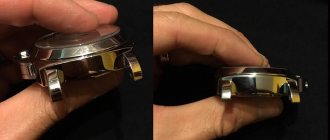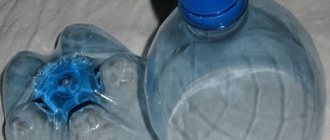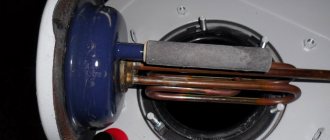If you are a novice artist who is just getting acquainted with the world of art and studying materials for drawing, then you may not have heard of nag. Behind this funny name lies an eraser with interesting properties that resembles plasticine to the touch. Let's figure out what it is - a drawing stick, and why an artist needs it. This knowledge will definitely be useful to you when creating works with pencil, charcoal and pastel. You can see what it is - a nag for drawing, in the photo below.
When is it time to change the Nag?
If the kneaded eraser has darkened, it’s time to replace it with a new one. But don’t rush to throw away your old kneaded eraser, because it can be reused, for example, as a mount for wooden drawing tablets on a table.
Interesting materials:
How to take baking soda for reflux? How to take vitamin B12 before or after meals? How to receive calls on Samsung Galaxy? How to solder to a board without a soldering iron? How to tame a stray pet in Sims 4? How to train a dragon in Minecraft with the Ice and Fire mod? How to tame the dragon Everwing? How to tame a lizard? How to tame a robber in Minecraft? How to tame Dont Starv pigs?
How to use a drawing stick
These fancy erasers are used to remove and highlight materials such as graphite, charcoal, pastel and chalk. The main feature of a drawing stick is that it is a plastic eraser. You can give it any shape, which is great for detailing work. If you separate a small piece from the rest of the mass, sharpen its edge like a pencil, and apply a few thin strokes, you can easily correct a small flaw in your work without erasing the excess. With ordinary rubber erasers, performing such a maneuver without touching most of the drawing is problematic.
Another feature of the drawing nag is that this mass does not leave marks on the paper. She seems to eat graphite or pastel, drawing them into herself. When working with kneaded paper, you don’t need to constantly brush off pieces of dirty eraser from your work. Simply press it to the desired area several times and the excess graphite will disappear.
But this may not work if the pencil marks are too dark and you drew with a lot of pressure. The push and lift method is suitable for most kneading work. But when drawing a portrait, when it comes to creating the hair, a sharp tip is more suitable. The main thing is to brush off the graphite with light strokes, without putting too much pressure on the drawing, otherwise the graphite will bend.
What is Formoplast used for?
Formoplast
artistic is essentially a “nag” used to reduce the brightness of some areas, it seems to absorb color, on paper it looks like this: For its intended purpose, of course, I also use this tool, but I’ll tell you about a little “perversion” that In some situations it is quite helpful.
Interesting materials:
What can a tacheometer do? What can a JBL Smart Speaker do? What can and can't a horse do? What can you spray with succinic acid? What can you spray with potassium permanganate? What can you spray with copper sulfate? What can you clean with a steam mop? What can you add to epoxy resin? What can you add to oil paint? What can you use for papier mache?
Method No. 1
To make a nag, it is best to use an eraser that bends and stretches well. An eraser that is too hard and oaky will not work.
The first step is to rub the eraser to get fine shavings.
We warn you right away - a kitchen grater is not suitable for this! To grind the eraser, the author used the ribbed part of a stationery knife.
Take the resulting shavings and knead them with your fingers until you get a homogeneous mass.
How to make a soft eraser yourself
Artists can make such an elastic band themselves. In order to make a nag for drawing with your own hands, you will need ordinary erasers. They need to be placed in a jar of gasoline and left for 2-3 days. Then the resulting mass is dried on paper towels and boiled in clean water. The result should be a soft eraser, similar to a nag. But it is unlikely that it will be the same bright and pleasant color as the original.
Method No. 2
If you don’t want to rub the eraser, you can use the method for the lazy. Cut thin strips from the eraser and place them on a metal surface.
We drip gasoline onto each piece of eraser.
We wait for the fuel to evaporate and roll the pieces into dust. Dry it. After this, we roll along the sticky side of the tape and form a homogeneous mass with our fingers.
Recovery methods
Rubber elements, under the influence of external factors, lose their original properties, become less elastic, and harden. Their continued use will not bring the desired effect; seals, for example, will not be able to make the system completely sealed. Purchasing new rubber elements is sometimes difficult due to the lack of products of the required sizes or their inflated cost.
The following substances can soften rubber:
- Kerosene. Allows you to make rubber parts soft, affecting the structure of the material. After processing, the rubber element becomes completely elastic. The recovery technology is as follows:
- fill a small container with kerosene (select the container size depending on the size of the product to be restored);
- place the part in a container with kerosene for 3 hours;
- after the specified time, check the product for softness, if the result is satisfactory: remove the material and rinse with warm running water;
- Dry the material naturally, without using a hair dryer or battery.
- Ammonia alcohol. The process for restoring old material is as follows:
- dilute the specified alcohol with water in a ratio of 1:7;
- place the rubber material in the resulting solution for half an hour;
- after the specified time, remove the part and rinse with warm running water;
- Allow the part to dry completely before using it.
Please note: you cannot keep rubber in a solution of ammonia and water for more than an hour. If the material is not elastic after 30 minutes, use another recovery method.
- Rubbing alcohol followed by glycerin. Technology for “reanimation” of rubber parts:
- fill the container with medical alcohol;
- place the part that requires restoration in alcohol for several hours;
- after the specified time, check the condition of the product, if it is soft enough, remove the element from the solution and wash with warm soapy water;
- rub glycerin into the surface of the part using a sponge (cloth);
- remove any remaining glycerin from the surface of the product.
Instead of glycerin, it is allowed to use automobile oil; it is rubbed into the surface of the product, then the part is left for half an hour before use. During this period, the rubber becomes quite elastic.
- Castor oil and silicone. Let’s make a reservation right away - this method allows you to quickly “reanimate” old rubber, but the restoration effect will not last long; after a few days the product will become hard. For this method, follow the sequence:
- coat the part with silicone;
- wait 10 minutes;
- After the specified time has passed, the part can be used.
Please note: a similar effect is achieved by using castor oil. It is rubbed into the surface of the part, after which it becomes soft and elastic.
We recommend watching a video about softening rubber using ammonia:
What is needed to restore the elasticity of rubber?
Rubber is considered one of the most elastic materials. It is for this reason that it is used in the manufacture of various seals. After the load stops acting on the seal, it is able to return to its dimensions. This moment determines the spread of the question of how to restore the elasticity of rubber. Over time, this property is also lost. If the surface wears too much, cracks appear, due to which the insulating qualities are significantly reduced.
You can soften rubber at home using common substances. The most commonly used substances are:
- Kerosene can easily restore the elasticity index. This substance is ideal for processing small products; it can be softened by soaking them.
- Ammonia can be used to soften the structure. To do this, it is enough to create a small bath in which the product is lowered for several hours.
When soaking rubber in a restoration liquid, it is worth considering that the material can significantly increase in size. To remove the substance from the surface, the product is thoroughly washed with soap and water.
In some cases, you can use hot water to soften the rubber. This method is used to restore the insulation of the refrigerator doorway. The achieved effect can be enhanced by wetting the surface with silicone.
Seals made from the material in question are also used in the production of windows. To improve the insulating qualities of the rubber bands, they are wiped with silicone and glycerin from time to time. Such substances can be purchased without any problems.
How to use a drawing stick
These fancy erasers are used to remove and highlight materials such as graphite, charcoal, pastel and chalk. The main feature of a drawing stick is that it is a plastic eraser. You can give it any shape, which is great for detailing work. If you separate a small piece from the rest of the mass, sharpen its edge like a pencil, and apply a few thin strokes, you can easily correct a small flaw in your work without erasing the excess. With ordinary rubber erasers, performing such a maneuver without touching most of the drawing is problematic.
Another feature of the drawing nag is that this mass does not leave marks on the paper. She seems to eat graphite or pastel, drawing them into herself. When working with kneaded paper, you don’t need to constantly brush off pieces of dirty eraser from your work. Simply press it to the desired area several times and the excess graphite will disappear.
But this may not work if the pencil marks are too dark and you drew with a lot of pressure. The push and lift method is suitable for most kneading work. But when drawing a portrait, when it comes to creating the hair, a sharp tip is more suitable. The main thing is to brush off the graphite with light strokes, without putting too much pressure on the drawing, otherwise the graphite will bend.
How to soften rubber at home by heating?
This method is used in cases where a quick, albeit short-term effect is needed. For example, when a hose needs to be put on a pipe. Such problems are solved by briefly immersing the product in hot water. That is why the method is not suitable for products of significant size.
If the rubber has hardened too much, the product can be boiled. You can speed up the process and increase the effectiveness of the procedure if you add table salt to the water. The material must be boiled until the product is sufficiently elastic.
You can heat rubber not only with water. You can provide a targeted effect of high temperature using a construction or regular hair dryer. This is especially true when it is not possible to soak the product in hot water, for example, when you need to remove the hose from the pipe.
Restoring the elasticity of rubber can only be done in the absence of any mechanical damage or other deformations. You also need to be prepared for the fact that some performance characteristics will be reduced or lost completely.
Elena Akhvlediani. Photo: from personal archive.
When was the last time you wrote a letter - not typed on a computer, but wrote out the words with a pen on a piece of paper? We wouldn’t be surprised if this happened back in school or university. Have you read newspapers or a regular book - not an electronic one?
Digitalization is conquering the world at tremendous speed. But despite the development of digital technologies, traditional companies continue to grow and develop. One of these is the Belkanton group, the largest supplier of office supplies - paper, pens, pencils and much more.
with Elena Akhvlediani , co-owner of the business, at the counter... of the first stationery bar in Belarus - a place where every visitor can test pens, markers, scissors and much more. And we talked about how “paper” business is developing in the digital age.
“To jump high, you must first sit down”
– Our first offline store is the result of our company’s four-year work in the B2C segment. We started a business in the B2B segment back in 1994.
Why did we choose stationery? During the Soviet years, we lacked all this. Remember how the heroines of the film “The Most Charming and Attractive” soaked an eraser in kerosene to make it softer?
And after the collapse of the USSR, this niche in the market turned out to be unoccupied, moreover, a corporate environment began to form, new companies with corresponding requests appeared.
The founder and leader of the business is my husband, who over the years has become an expert in choosing the best products in this segment. In the early 2000s, Belkanton became the center for the formation of a group of companies: first, Ofiston, a business providing comprehensive office services, was spun off. And then gradually we began to occupy new niches. This is how “Logoton” - souvenir products, “Clinton” - office cleaning products and others appeared.
Read also: Do-it-yourself lifting mechanism for a machine
That is, we “acquired” businesses in related areas – where we understood that we could become market leaders. We strived to ensure that our clients could receive the most complete range of services in one company.
How, for example, did the idea of going into “souvenir” come about? At one of the exhibitions, a representative of the supplier of Senator pens shared with us that 70-80% of their sales are made in the promotional products market. And we thought - why don’t we occupy this niche? By that time we already had a large base of business clients.
We expected that within a year or two we would become market leaders. Not everything was simple. Although the “souvenirs” segment is similar to the stationery segment, you need to work here in completely different ways. Other “points of contact”: when we supply paper and pens, we communicate with secretaries and supply department specialists, and when we offer branded products, then with marketers, designers or directly with managers.
In addition, “Ofiston” focuses on the needs of itself - more on their clients: you need to understand how best to design an advertising message on a product so that a person perceives it correctly.
Plus it was necessary to create a full-fledged production. At first we were engaged in pad printing on just one machine, then our fleet of machine equipment began to grow, we began to engage in silk-screen printing, laser engraving, and so on.
Yes, not in a year or two, but in three or four, but we became leaders because we knew that we could become the best in this area. It would be wrong to say that every day we only moved forward. After all, in order to jump high, you must first sit down. We have survived more than one crisis. And the result of each for us was growth.
It may be a hackneyed phrase that a crisis is a time of opportunity, but for us this has truly always been the case. We became more collected, faster, and more demanding.
Thus, there was a time when office paper accounted for the bulk of sales. It has low margins, but what can we do - we accepted this reality and provided what our clients needed in the best possible way.
“We don’t sell pencils and erasers, but emotions”
– In Europe and America, people are very attached to certain brands. If a person drew with Edding markers as a child, then as an adult he will 100% use the accessories of this company. And brands, in turn, do everything so that their customers at any age can get the right… emotions from their products. Yes, this is perhaps the most correct word.
In general, our business is actually very emotional. After all, everything in life consists of little things. Items on your desk—and we spend most of our lives working—help create the right mood.
I completely agree with Oscar Wilde's statement that a person should be surrounded by beautiful things. And we sell these beautiful things, besides, many of them have their own history. For example, the Faber-Castell company, which produces pencils, pens and other stationery products, is more than 250 years old!
Read also: Table of aggressiveness of razors
And we wanted every Belarusian to have such things, so that our children would begin to love certain brands from an early age. That’s why we entered the B2C segment 4 years ago. At first they opened only an online store. But we were immediately bombarded with questions: where can we watch it? It would seem, why look and touch an ordinary pen?
But the buyers insisted. And we opened our first offline store, which also has a stationery bar. This is our specialty, there is nothing like this in the country yet. We thought for a long time about how to give customers the opportunity to test our products - and came up with this solution. There is wi-fi, tea/coffee, and you can print or laminate documents. You wait while the printer is working and draw.
We think that in this way we will be able to attract Belarusians to those very goods - with history. For example, we have Cross pens, which are used by the American president to sign documents. You can come and try yourself in his role.
The shelves of the Ofiston store do not have the entire assortment: there are about 5 thousand items, and in total we have 17 thousand. Therefore, it is logical that we will expand our network of retail outlets.
“Will the paper disappear? No matter how it is!”
– We are often asked if we are afraid that with the development of digital, our business will become unnecessary. In response to such a provocative question, I ask my own: do you immediately put your child at the computer or give him a pencil and paper? Almost everyone here immediately agrees that the second is more correct. Although, for example, in the USA it has already been proposed not to teach children spelling, but to immediately type texts on the keyboard. And the negative reaction from parents was enormous.
You know, in the 2000s, when computers and the Internet became widely available, many predicted the death of paper media. But on the contrary, a paper boom began in the world - as there was a need to print documents in large quantities.
And the paper market (namely, it determines the development of the market for all office supplies) began to grow. By 2010, in economically developed countries it reached consumption volumes of up to 10 kilograms per year. By the way, here this figure is a little more than 2 kilograms.
True, with the advent of smartphones and tablets, the paper market dropped by 30 percent and froze. There is no further fall. But here's a new trend: paper books and magazines are gaining popularity again. We travel a lot and notice how bookstores have begun to scale: some of them already occupy premises of several floors.
In addition, although we are a traditional business, we have plenty of innovation. The composition, for example, of all paints has changed - they are completely non-toxic. Safe scissors for children have appeared - they cannot hurt themselves.
Digital and paper are not like theater and cinema: one is elite, the other is mass. These are two parallel worlds. Definitely, people will continue to use paper and pen for many, many years to come. The influence of psychology and genetic memory is too strong, because man has been drawing symbols by hand for centuries.
